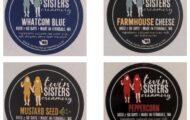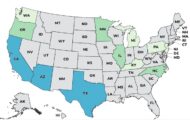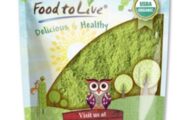We all know that during the coronavirus pandemic, more people are cooking at home out of necessity. Many people are cooking for themselves for the first time. And some of those people haven’t been taught about food safety. CNBC’s Make It section found the top 10 most-googled recipes during quarantine. And we are listing the food safety issues with some of those recipes.

The top 10 recipes are for: banana bread, pancakes, chicken, pizza dough, brownie, Recette crepe, meatloaf, French toast, lasagna, and cheesecake. All of these recipes can make you sick if not prepared correctly.
Baking Recipes
The potential food safety issues with the baking recipes are with eggs and flour. Don’t make any recipe that calls for eggs and isn’t cooked or baked before eating. Eggs can be contaminated with Salmonella bacteria. And always wash your hands well with soap and water after handling eggs.
Food safety issues with baked goods don’t end with eggs. Flour is also a concern. Raw flour can be, and has been, contaminated with dangerous pathogens including E. coli O157:H7. In the past few years, outbreaks have been linked to uncooked flour, and several brands of flour have been recalled for pathogen contamination.
Don’t make any recipe that doesn’t thoroughly bake dough or batter. Never eat raw dough made with flour, and don’t let your children eat it either. And wash your hands with soap and stare after handling flour.
It’s also important that you clean countertops, utensils, and work surfaces with soap and water after using raw eggs and flour.
Chicken
Chicken should be handled and treated as if it were contaminated, because many chicken products are contaminated with pathogens, particularly Salmonella. Always cook all chicken and poultry products, including ground chicken, to 165°F and measure it with a good food thermometer.
Watch out for raw chicken juices. Don’t let them contaminate surfaces in your. kitchen, and particularly other foods such as fruits and vegetables that are eaten raw. This is called cross-contamination. Many foodborne illness outbreaks have been caused by cross-contamination.
Wash your hands, utensils, countertops, and work surfaces with soap and water after preparing raw chicken.
Ground Beef and Meats
Ground beef is another inherently potentially dangerous. product. The first widespread E. coli O157:H7 outbreak in 1993 was linked to Jack in the Box hamburgers that were undercooked. That outbreak sickened more than 500 people and hospitalized 30. Most tragically, three children died from complications of the infection.
E. coli O157:H7 occurs naturally in the bowels of cattle, sheep, and goats. When the animal is slaughtered, this bacteria can get onto the surfaces of cuts of meat. When the meat is ground to make hamburger, the bacteria then gets mixed throughout the product.
All ground meat recipes, including hamburgers, should be cooked to 160°F, again measured with that food thermometer. And again, watch out for meat juices and always wash your hands and surfaces in your kitchen with soap and water after handling raw ground meat.
Protect Yourself
These warnings aren’t meant to scare you, but inform. Once you start practicing safe food handling, these steps will become routine. And now that you know about these hazards and how to prevent them, you can enjoy cooking and baking and providing good food for your family and friends.
You may learn about pandemic food safety, but these lessons can be applied when everything goes back to normal. They will become a habit whenever you are in the kitchen.




